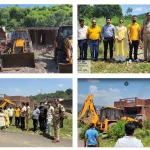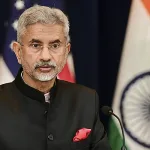Srinagar, Apr 29: With tensions escalating along the Line of Control (LoC) following the recent terror attack in Pahalgam, schools in Jammu and Kashmir’s border districts of Poonch, Kupwara, and Baramulla’s Uri sector have ramped up emergency preparedness protocols to safeguard students and staff.
The April 22 attack, which left 26 civilians—mostly tourists—dead, has heightened fears in LoC-adjacent areas already vulnerable to cross-border shelling. In response, educational institutions in volatile sectors such as Balakote (Poonch), Tangdhar and Karnah (Kupwara), and Uri (Baramulla) have launched a series of safety initiatives, including bunker inspections, student evacuation drills, and staff-led emergency training sessions.
With intermittent artillery exchanges reported along the LoC on Tuesday, schools are implementing swift-response strategies. Students are being trained to seek shelter in reinforced underground bunkers and remain composed in the event of sudden shelling.
“In these border areas, we can’t afford to wait for a crisis to react,” said Mohammad Haneef, Principal of a government school in Uri. “Every drill we conduct is potentially life-saving. We’ve ensured that students know where to run and how to protect themselves if shelling begins during school hours.”
Haneef noted that bunkers—some built years ago but rarely used in recent times—are now being thoroughly cleaned and stocked with water, basic first-aid kits, and emergency supplies. Teachers are holding dedicated preparedness sessions to familiarize students with safety protocols, early warning signs, and evacuation routes.
In Karnah sector of Kupwara, teacher Mohammad Asif Khatana described the emotional toll of preparing children as young as seven for wartime emergencies. “It is painful, but necessary. Our geography forces us to live between learning and survival,” he said. “Shelling can begin without warning. These drills are crucial to ensure our children can respond quickly and efficiently. We’ve also involved parents in awareness sessions to build community-wide readiness.”
Poonch district, which lies directly along the volatile LoC, has seen a similar wave of activity. Schools in Balakote, Mendhar, and Mankote have become focal points for emergency response planning. Regular mock drills are being conducted, and teachers are leading sessions on first aid, bunker safety, and rapid evacuation.
“All schools in high-risk zones have been directed to remain on alert and coordinate closely with local disaster response teams,” a senior district official said. “Sending children to school in such conditions is a daily act of courage for families living under the constant threat of shelling.”
Disaster management teams have also been deployed to vulnerable villages to inspect civilian and school bunkers, assist with preparedness efforts, and advise local authorities.
“Following the prevailing security scenario, especially after the Pahalgam attack, all schools in sensitive sectors like Poonch, Kupwara, and Uri have been instructed to conduct regular drills, maintain functional bunkers, and place student safety above all else,” the official added. “Our priority is to ensure the continuity of education without compromising on emergency readiness.”
As border residents brace for further uncertainty, the efforts by educators and local authorities underscore the sobering reality of schooling in conflict-prone regions—where every lesson is taught under the shadow of risk, and every drill may one day prove vital.








